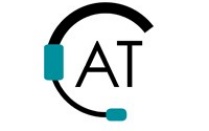Anthropometry
Competency Group: Universal Design
Type: Design
Description: Anthropometric data sets represent a range of physical sizes of people (and their body segments) in a measured population. They show size dimensions for people according to age and gender. Size information about people is very useful in design as it gives target dimensions for a potential user base.
Citation for Description: Described by authors
Units: Quantitative data for design applications
Advantages: After user group has been identified design specifications can be taken directly from existing anthropometric databases.
Limitations: If the group is very specialized with very specific needs, then some more generalized information could be misleading.
Target Audience: Marketing, Engineering and R&D
Relevant to Universal Design: Yes
Stages and Steps: 1.2, 2.1, 2.2, 4.2, 4.3, 4.11, 5.1
Free Resource: Steinfeld, E., Lenker, J., & Paquet, V. (2002). The Anthropometrics of Disability: An International Workshop. Retrieved from http://idea.ap.buffalo.edu//Anthro/The%20Anthropometrics%20of%20Disability.pdf
Purchase Resource: Open Ergonomics. (n.d.). Visual Anthropometry Software. Retrieved from http://www.openerg.com/index.htm
Purchase Resource: Robinette, K. M. (2012) Anthropometry for Product Design, in Handbook of Human Factors and Ergonomics, Fourth Edition (ed G. Salvendy), John Wiley & Sons, Inc., Hoboken, NJ, USA.
